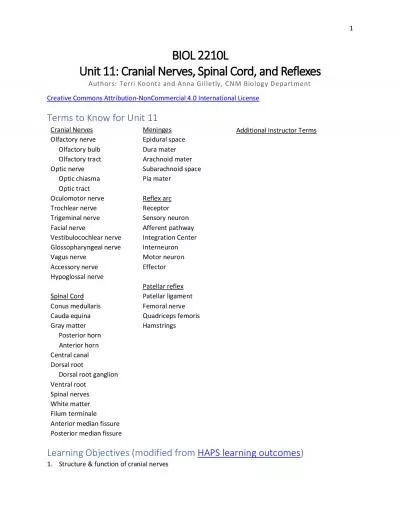PPT-The Eye There are 4 cranial nerves: Optic (II), Oculomotor (III), Trochlear (IV), and
Author : mitsue-stanley | Published Date : 2019-12-13
The Eye There are 4 cranial nerves Optic II Oculomotor III Trochlear IV and Abducens VI People of Asian descent have an EPICANTHIC FOLD in the upper eyelid no functional
Presentation Embed Code
Download Presentation
Download Presentation The PPT/PDF document "The Eye There are 4 cranial nerves: Opt..." is the property of its rightful owner. Permission is granted to download and print the materials on this website for personal, non-commercial use only, and to display it on your personal computer provided you do not modify the materials and that you retain all copyright notices contained in the materials. By downloading content from our website, you accept the terms of this agreement.
The Eye There are 4 cranial nerves: Optic (II), Oculomotor (III), Trochlear (IV), and: Transcript
Download Rules Of Document
"The Eye There are 4 cranial nerves: Optic (II), Oculomotor (III), Trochlear (IV), and"The content belongs to its owner. You may download and print it for personal use, without modification, and keep all copyright notices. By downloading, you agree to these terms.
Related Documents














